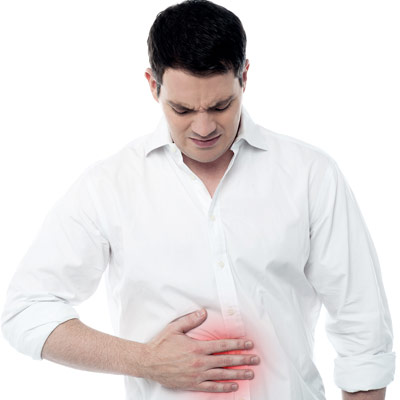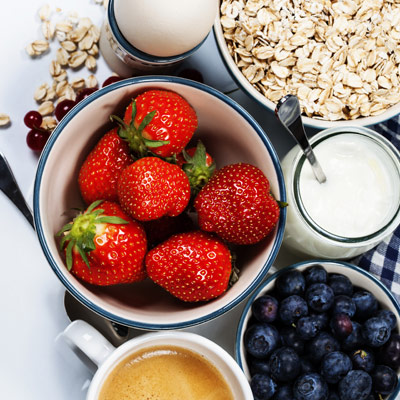All About Gut Health – Bowel Cancer Awareness
- June 18, 2015
- Posted by: Spotscreen
- Category: Articles

Bowel cancer is the 2nd biggest cancer killer after lung cancer; 77 Australians each week.
- 15,151 people are diagnosed each year
- Claims 3,980 Australian lives each year
- 1 in 12 people will develop bowel cancer over a lifetime
Australian lives are saved through:
- Early detection and preventative measures; Screening and diet
- Increase intake of plant based foods which support digestive health and assist growth of good bacteria; GI tract bacterium
- Adequate fibre (soluble and insoluble) which gives bulk to our stool
Bowel Cancer Risk: We are what we eat
Freshly cooked meats are a great source of iron, zinc and protein however excess meat consumption; particularly processed meats have been linked to bowel cancer development.
Cook carefully; carcinogens in blackened, charred meats causes’ damage to bowel cell lining. Prevent burning meats by cooking inside partially or marinading prior to grilling
or barbequing.
Limit meat consumption to <500g week; keep processed meat consumption to minimal if any at all.
Microbiome diet: Our gut bacteria are what we eat
If we are what we eat then so are the bacteria (microbiome) in our guts.
Nutritious food supports digestive health assisting growth of good bacteria (Bacteroidetes) adding to gut flora profile. Excess energy intake particularly from processed foods leads to a bacteroidetes/ firmicutes imbalance. Firmicutes impact negatively on weight maintenance as it promotes greater energy extraction from food consumed resulting in fat accumulation.
High energy intake leads to reduced bacteroidetes in gut flora.
Key ingredients for happy bacteria:
1. Prebiotic rich foods
- Dietary fibres; non digestible food component that stimulates growth and activity of friendly bacteria in the large bowel
- Natural prebiotics; onions, garlic, legumes, asparagus and rye
- Beta-glucan in oats
- Psyllium husk
2. Probiotic rich foods
- Fermented foods; yoghurt, miso (made from fermented rye, rice, barley), tempeh, sourdough bread, blue vein and other mould-containing cheeses
- Live micro-organisms; ginger beer and kefir (Live yoghurt made from goats milk and grains; high in antioxidants)
- Sauerkraut; fermented cabbage, rich in vitamins B, A, E and C
- Human breast milk
3. Fibre
- Soluble/ in-soluble fibre
- Resistant Starch
Eating more fibre-containing foods has many health benefits. Try to eat more high fibre breads and cereals, fruits, vegetables, dried beans and lentils each day.
Scientists have discovered that friendly bacteria living in the bowel can ferment fibre to produce gases and short-chain fatty acids. These end products aid in bowel health by preventing tumours and polyps forming.
Fibre or dietary fibre is the part of food that is not digested in the small intestine. Largely unchanged dietary fibre moves into the large intestine or colon where it is fermented by friendly gut bacteria (Bacteroidetes).
Eating foods high in fibre

It is recommended that Australians aim to eat at least 25 – 30g fibre each day. Eating more dietary fibre can help keep your digestive system healthy and reduce your risk of:
- Constipation; normalizing bowel movement
- Diverticular disease of the colon
- Hemorrhoids
- Bowel cancer
- Obesity; assisting weight maintenance
There is also evidence indicating an association between eating a diet rich in high fibre whole grain foods and a lower risk of cardiovascular disease.
It is important to eat a variety of foods rich in both insoluble and soluble fibre.
Insoluble fibre
Insoluble fibre, adds bulk and helps to keep the bowels regular, it is the hard, scratchy outer skins and surfaces of roots, grains and seeds which are not as easily digested. Insoluble fibre is also very filling.
Foods high in insoluble fibre:
- Whole grain breads and cereals
- Nuts and seeds
- Outer skins of fruit and vegetables
- Carrots and cabbage
- Raw lentil, kidney beans and chickpeas
Soluble fibre

Soluble fibre partially dissolves in water to form a thick gel in your intestines, slowing digestion. This gel may also help to lower the ‘bad’ LDL cholesterol by removing it from the body and can help stabilize blood glucose levels in individuals with diabetes. Soluble fibre increases satiety and for longer periods of time after eating by slowing digestion.
Foods high in soluble fibre:
- Fruits and vegetables (eg. cucumber, celery, prunes and apples)
- Dried beans and lentils
- Oats, bran and barley
- Flaxseed and psyllium
Resistant starch
This is starch that resists digestion in the small intestine; Non-digestible carbohydrate. Once in the large intestine, resistant starch fuels friendly bacteria which ferment it. This process produces beneficial digestive and metabolic affects that help to keep the lining of the bowel healthy. These include the production of SCFA (butyrate) for cancer prevention, increased insulin sensitivity for blood glucose maintenance and prebiotic affects for increased stool bulk.
Resistant starch can be found in carbohydrate rich foods:
- Legumes, grains and cereals; bound in fibrous cell walls
- Unripe bananas
- Cold salads (cooked and cooled); pasta, rice, potato
- ‘al-dente’ or slightly undercooked pasta
- Legumes; Chicory root, Jerusalem Artichoke, garlic and Leek
- Products; Hi-Maize a corn variety, found in commercial food products such as breads and cereals to boost fibre
Below is an example of how an adult may meet their daily dietary fibre requirements.
| Food | Fibre Content |
|---|---|
| 3/4 cup whole grain breakfast cereal eg. Rolled oats | 6.8g |
| 2 slices wholemeal bread | 4.5g |
| 1 apple (with skin) and 1 orange | 5.5g |
| 2 cups mixed raw vegetables | 11g |
| 1/4 cup legumes eg. Kidney beans | 3g |
| Total | 30.8g |
According to Bowel Cancer Australia; bowel cancer patients currently have a five year survival rate of only 66%, dramatically less than that of breast and prostate cancer. Despite the rise in Australian deaths over the year’s bowel cancer onset is preventable. Remember early detection and preventative lifestyle measures are key to saving lives.
Spotscreen’s bowel cancer screenings are designed to support healthy bowel function by effectively testing ‘at risk’ employees.
Find out more about Spotscreen’s Bowel Cancer Screenings.
Spotscreen offers a range of tailored nutrition-based programs which promote gut health and set the foundations for healthier lifestyles, nutritious diets and improved overall health and wellbeing.
Find out more about Spotscreen’s Nutrition Programs.
1300 305 230
enquiry form
Download this Article (PDF)
[line] References:1. Abell. Et. Al. (2008). Phytotypes related to Ruminiococus Bromii are abundant in large bowel of humans and replicate in response to a diet high in resistant starch. Microbial Ecol; 66 (505-515).
2.Biesiekierski JR, Rosella O, Rose R, Liels K, Barrett JS (2011). Quantification of fructans, galacto-oligosacharides and other short- chain carbohydrates in processed grains and cereals. Journal of Human Nutrition and Dietetics (24):154-176.
3. CSIRO. (2012). “Resistant starch may offer potential to help protect against bowel cancer.” 2012, Retrieved from http://www.csiro.au/Portals/Media/resistant-starch-may-offer-potential-to-help-protect- against-bowel-cancer.aspx.
4. Eckburg PB, Bik EM, Bernstein CN, et al. Diversity of the human intestinal microbial flora. Science. 2005;308(5728):1635-1638.
5.Eswaran, S, Muir, J and Chey,. WD (2013). Fiber and functional gastrointestinal disorders. Am J Gastroenterol;108 (5):718-27.
6.Lewis SJ, and Heaton KW (1997). Stool form scale as a useful guide to intestinal transit time. Scand. J. Gastroenterol; 32(9) 920 (4).
7.Muir, J.G and Gibson, P. R (2013). The Low FODMAP Diet for Treatment of Irritable Bowel Syndrome and Other Gastrointestinal Disorders. Gastroenterology & Hepatology, 9 (7):450-2
8.Turnbaugh PJ, Ridaura VK, Faith JJ, Rey FE, Knight R, Gordon JI. The effect of diet on the human gut microbiome: a metagenomic analysis in humanized gnotobiotic mice. Sci Transl Med. 2009;1(6):6ra14.
Leave a Reply
You must be logged in to post a comment.
